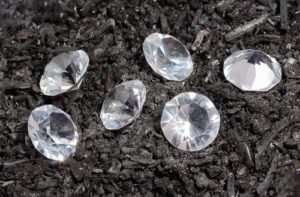
What Does Cavity Inclusion in a Diamond Mean?
 It is a known fact that all sorts of inclusions affect the diamond ring costs in one way or another. That is why, it is very important for the buyers to understand what all types of diamond inclusions are there, so that they can assess the worth of the stone properly.
It is a known fact that all sorts of inclusions affect the diamond ring costs in one way or another. That is why, it is very important for the buyers to understand what all types of diamond inclusions are there, so that they can assess the worth of the stone properly.
Cavity is a common type of inclusion found in natural diamonds, which typically denotes a hole in the stone. Usually, the cavity inclusion is formed in a diamond during its polishing stage, when an inner crystal inclusion is removed from the gemstone, leaving an empty void and opening on its surface. Diamond cutters do not polish off the cavity inclusion because that would involve a significant loss in the carat weight of the rough stone. As a result, we get a lower clarity grade diamond, but of a better carat value.
 As for the buyers, it is better to avoid cavity inclusions in diamonds of SI1 or SI2 grade, as the cavities in the stone might become dark and visible to the naked eye after a couple of years with wear and tear, dirt, and natural skin oil buildup. Besides this, the location of the cavity inclusion is also an important aspect to consider – if they are at the bottom part or in an unnoticeable area of the stone, it is much acceptable, and it will definitely help in cutting down the diamond ring costs.
As for the buyers, it is better to avoid cavity inclusions in diamonds of SI1 or SI2 grade, as the cavities in the stone might become dark and visible to the naked eye after a couple of years with wear and tear, dirt, and natural skin oil buildup. Besides this, the location of the cavity inclusion is also an important aspect to consider – if they are at the bottom part or in an unnoticeable area of the stone, it is much acceptable, and it will definitely help in cutting down the diamond ring costs.
